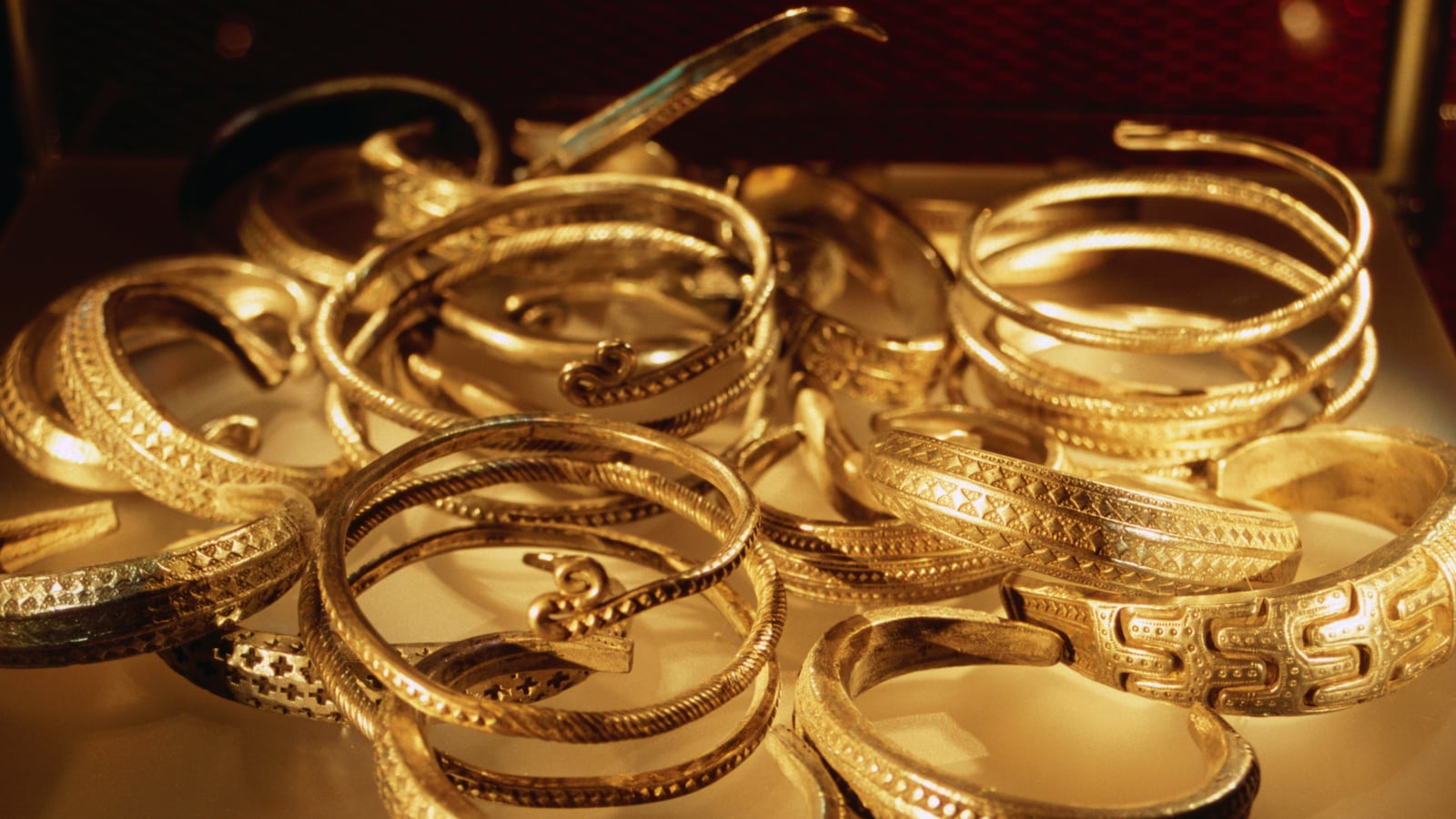We’ve all seen them: men and women waving metal detectors around the beach, wearing large headphones and toting plastic bags, dogged in their pursuit of lost Rolex watches and engagement rings buried in the sand.
On a good day, they might go home with someone else’s jewelry, but rarely do their beeping devices uncover priceless historical contributions to contemporary culture that happen to be worth millions.
That’s what happened to Derek McLennan, 47, a retired Scottish businessman who unearthed the largest trove of Viking material found in Scotland since the 19th century. McLennan was scouring church land with his metal detector in September when he came across a silver spoon.
“Initially I didn’t understand what I had found...then I saw the saltire-type of design and knew instantly it was Viking,” he told The Guardian this week.
Further scouring yielded more than 100 artifacts from all over Europe, including gold arm bands and silver ingots, amulets from Ireland, a solid silver Christian cross embellished with enamel, and a yet-to-be-emptied Carolingian pot—likely an heirloom that belonged to the family who buried the trove. (All of the objects are believed to have been buried between the mid-ninth and 10th centuries.)
“What makes this find so significant is the range of material from different countries and cultures,” said Scott Campbell, head of Scotland’s treasure trove unit. “This was material that was buried for safekeeping, almost like a safety deposit box that was never claimed.” The objects also lend new perspective to the Vikings’ reputation for raiding Scottish territory. “This was a Viking area where they settled and traded,” said Campbell.
McLennan’s cache is the latest in a slew of archeological troves discovered in recent years by metal detectorists, who are uncovering nearly 90 percent of all archeological artifacts in the UK. The surge came with a 1997 law in Britain requiring all buried treasure to be reported, with half of all proceeds from sales to museums promised to the bounty hunters.
And it’s mostly in the UK where they’re striking gold. In 2007, David and Andrew Whelan were rooting around a field near Harrogate, England when they found a large silver and gold Viking pot containing looted treasure from central Asia to north Africa: 600 gold and silver coins, a gold arm band, silver rings and brooches. The father and son treasure-hunting obsessives split the roughly $1.2 million in proceeds with the landowner. Three years later, another father and son duo found a 500-year-old gold pendant worth $4 million in Essex.

And in 2009, David Booth, a park ranger in Stirling, Scotland, stumbled on four gold necklaces from the first century B.C.—the country’s most important find of Iron Age gold to date, worth roughly $650,000. That same year, Terry Herbert’s metal detector sweeping in Staffordshire, England yielded a spectacular hoard of 1,500 Anglo-Saxon gold, silver, and garnet objects and artifacts—coins, crosses, weapons, and helmet decorations—valued at $5.3 million.
In 2012, a pair of Englishman discovered the world’s largest Celtic coin trove on Jersey, an island located of the northwest coast of France. The 70,000 coins dated back 3,000 years to the Iron Age and worth an estimated $15 million.
American’s amateur treasure hunters aren’t as lucky. “We don’t have that kind of treasure in the United States,” said Chris Espenshade, a consulting archaeologist for Commonwealth Cultural Resources Group in Michigan.
But even in the New World, there are still archaeological riches to be plundered. So if this weekend sees you outside whirring with your state-of-the-art metal detector, happy hunting.






